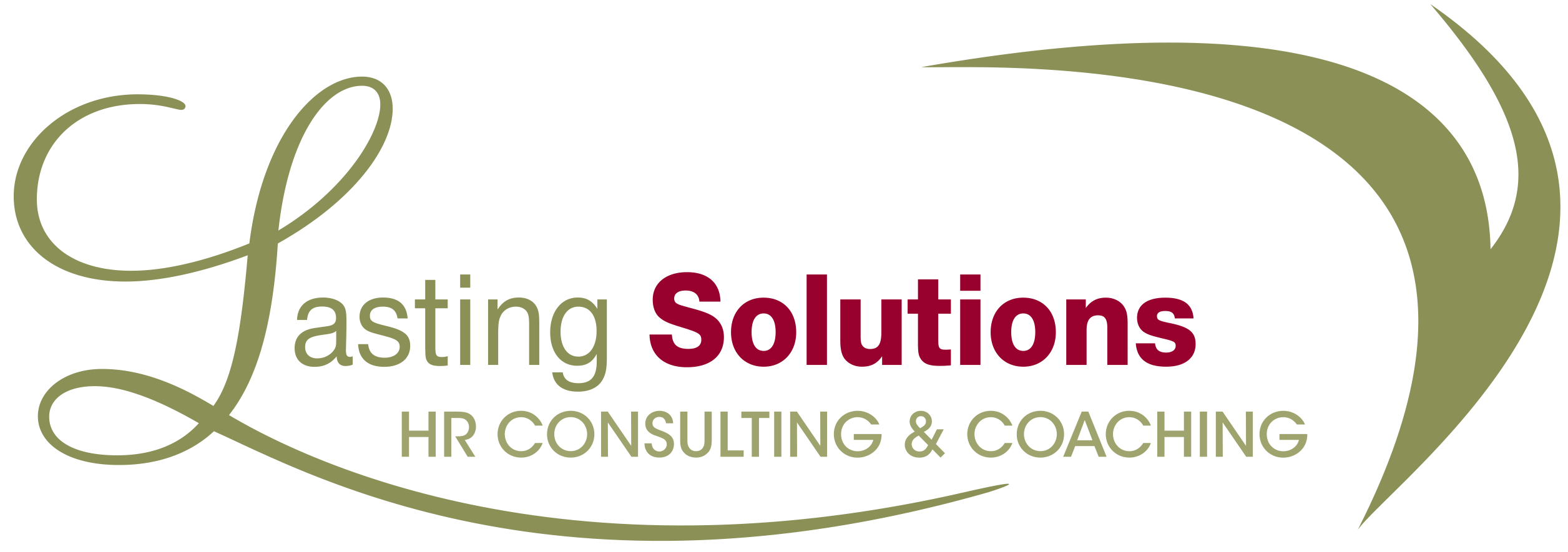Recognition: A Critical Component of the Total Rewards Mix
During the past several years the concept of total rewards has advanced considerably. Practitioners have experienced the power of leveraging multiple factors to attract, motivate and retain talent; high performing companies realize that their proprietary total rewards programs allow them to excel in new ways.
There are five elements of total rewards, each of which includes programs, practices, elements and dimensions that collectively define an organization’s strategy to win the war for talent. Following are these elements:
- Compensation
- Benefits
- Work-life
- Performance and recognition
- Development and career opportunities.
The elements represent the “tool kit” from which an organization chooses to reward employees for their time, effort and talent, creating value for both the organization and the employee. An effective total rewards strategy results in satisfied, engaged and productive employees, who in turn create desired business performance and results.
Recognition is a Big Part of Total Rewards
Recognition is emerging in this changing universe as a critical linchpin in the rewards platform. Employees work for more than just a pay check; they want to be recognized for their efforts. Well-designed recognition programs that support organizational goals are meeting these expectations and significantly impacting productivity.
Employee recognition is being utilized as a more strategic tool in attracting and retaining today’s shrinking workforce.
Now might be a good time to ask: Do you have a recognition strategy?
Knowledge-Based Performers Respond to Recognition
Today, rewards are generated by what you know rather than the job you hold.
Workers used to sign up with a company for the duration of their careers and simply wait to be promoted. With rare exception, people accepted reward plans and increases based on position.
A number of surveys report that today’s college graduates will change jobs anywhere from four to 10 times during their lifetime. This group exemplifies the theory, “If you’re not the lead dog, the scenery never changes.”
Regardless of the company, the most motivated employees are those with a line of sight to the goal and some level of decision-making authority to achieve it. However, much of work today is still not discreetly defined in that way. The further down the organization chart, the harder it is for employees to “lead” a direct effect on strategic goals.
Here again, recognition programs can figure prominently in waging the battle to retain good talent.
Appealing to a Diverse Workforce Appetite
Total rewards plan design has become a moveable feast. The successful menu will include a selection of recognition plans that appeal to a diverse workforce appetite while recognizing the uniqueness of each individual. While recognition alone can be a very effective tool to motivate and retain talent, many recognition plans include a rewards aspect such as a gift card, movie tickets or preferred parking. One advertising agency took it a step further and allowed its employee of the month to drive the president’s car—which happens to be a Masserati— for the entire month. While many companies give preferred parking to recognize employees, this innovative company went above and beyond by giving not only the parking spot, but the car along with it.
A large U.S.-based loyalty marketing firm characterizes recognition and reward appetites based on generations as follows:
Traditionalists (61+): Are less willing to spend money on themselves, so noncash recognition is key. They prefer flexible schedules, health and fitness opportunities, entertainment venues and technology items.
Boomers (41-60): Want to feel appreciated for the work they do and may leave a long-term employer if their contributions go unrecognized. They have an appetite for travel, luxury and health-related options.
Generation X (25-41): Embraces a balanced lifestyle with time for work and play. Workers value gadgets and high-tech items, flexible schedules and work-life effectiveness, including time off.
Generation Y (14-25): Looks for immediate performance feedback. Workers in this generation have lofty financial and personal goals and fully expect to fill this plate. They seek charity-related options such as time off to volunteer.
While generalizations and stereotypes can help organizations design recognition plans to appeal to their workforce, recognizing the uniqueness of each individual (regardless of generation) is the key to employee engagement and management success. Often times, the more public the recognition, the more powerful the effect. But there are employees who are embarrassed and subsequently demotivated by public recognition. This is one example of where employee preferences vary, and because managers are usually trying to motivate and retain many different types of individuals, they need enough flexibility to adapt the plan as needed.
Minimal Expense and Complexity Required
Recognition plans need not be expensive or complex. The most effective are a combination of formal and informal recognition, immediate and long-term, public and nonpublic, individual and team. Whatever combination you choose, however, the plan will fall short without clear guidelines, regular communication, a timely response and top-down support—including an annual budget. Having an annual budget for recognition programs makes it easier to track and helps ensure sustainability.
Consider taking the following steps to design the best plan for your organization:
- Establish program objectives, measurements and a budget.
- Select the best recognition alternatives—formal/informal, immediate/long-term, public/ nonpublic, individual/team.
- Determine legal requirements and tax liability.
- Integrate recognition into the total rewards program.
- Prepare the action plan.
- Educate managers and train plan leaders.
- Communicate heavily throughout implementation and regularly thereafter.
- Consistently evaluate effectiveness through employee surveys and other feedback mechanisms.
Aligning Recognition Programs with Corporate Goals
In order to be effective, managers must first understand the business priorities behind the recognition program and buy into how the program will influence behavior and drive results. In turn, they need to ensure that employees see the connection. For example, if quality improvement is a corporate goal, then recognition needs to be tied to those behaviors that further the achievement of quality. The same applies if the corporate goal is customer satisfaction or retention.
At one company, one of the organizational goals is greater visibility. One way the business is achieving this goal is to train corporate spokespeople to speak to journalists and educate the press on their particular subjects. To encourage and recognize this effort, the company launched the “Media Darling of the Year” award. The staff person who gives the most interviews (quantity) to top-tier press (quality) wins the award each year. The Media Darling is publicly recognized at staff meetings (attended by the chairman of the board) and awarded a trophy and gift certificate. In addition, spokespeople receive immediate recognition during the year: each time they are quoted in the press, an announcement is sent to the entire organization applauding the results.
Recognition can completely backfire if the criteria are not well established or recognition is too focused on goal achievement rather than encouraging the specific employee behaviors that contribute to organizational success. For example, an employee may be tasked with leading an IT project from inception to implementation. While deadlines are important, the organization believes that resilience and the ability to respond to a changing environment are core values that have contributed to the organization’s success over time. The employee does a spectacular job managing the project, key stakeholders, business users and resources. However, due to circumstances beyond his or her control, organizational priorities change, causing a temporary freeze in the project. Subsequently, major milestones and project delivery dates are not met on time. With an effective recognition program in place, the employee is publicly recognized for his or her dedication, resilience and follow-through. While he or she may receive an additional award for completion of the project, the recognition in particular is an effective tool to motivate this employee, and can motivate others to behave in a similar manner, exhibiting the values that are important to the organization.
Recognize, Motivate, Retain
The horizon brims with potential developments one can hardly begin to imagine. The stakes just keep getting higher as the workforce shrinks, global competition grows and employees see a future with a banquet of opportunity.
With employee preferences and appetite in mind, step back, re-evaluate and include the recognition platter in preparing a perfect complement to your total rewards menu. There is no question flexible, customized plans, carefully aligned with your strategic goals, promote long-term increases in workforce satisfaction and corporate profitability.
About the Author
Alison Avalos, CCP, CBP, GRP, is a recognition practice leader and content deployment project manager for WorldatWork as well as a former practitioner. She can be reached at aavalos worldatwork
worldatwork org.
org.


Leave a Reply